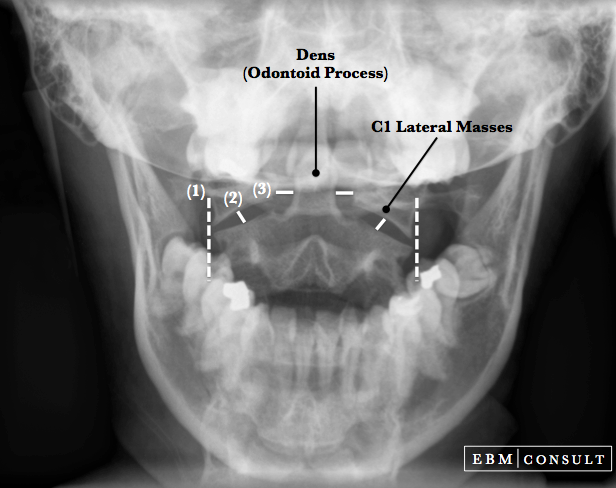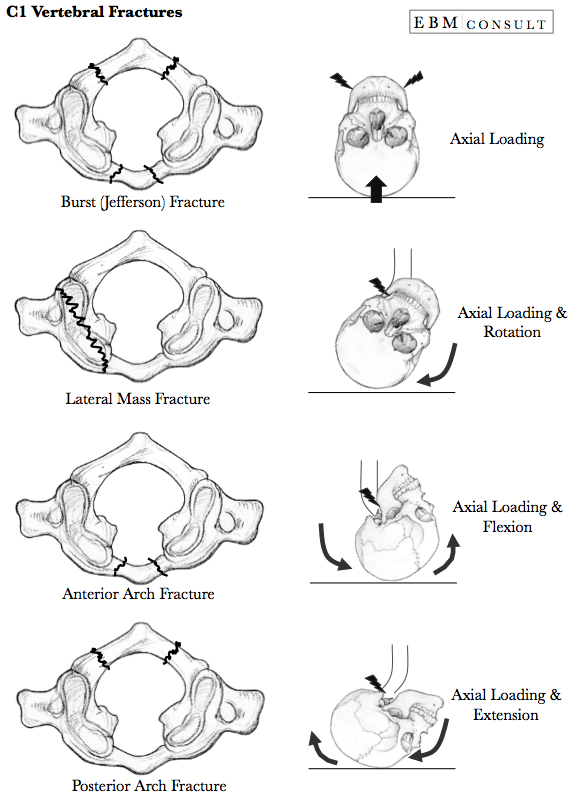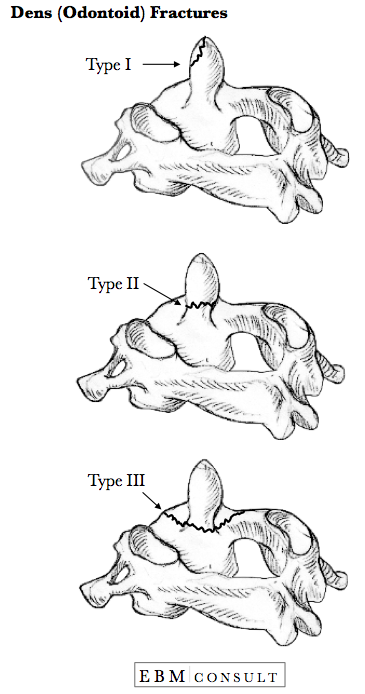Lateral Cervical Spine Radiograph (X-Ray)
Summary:
- The recognition of basic anatomy and radiographic lines is important in the proper interpretation of a lateral cervical spine (i.e., c-spine) radiograph.
- This article will show you common things you should look at when reading a lateral c-spine radiograph, but are also useful when reading a CT scan or MRI of the c-spine.
Note About Images: Scroll over or tap on image to see the labels and lines.
Lateral C-Spine Radiograph
|
|---|
- This is a line drawn on a
lateral radiograph of the skull or on a sagittal cut from a CT or MRI scan that
connects the posterior and anterior aspects of the foramen magnum.
- The tip of the dens (or odontoid process) should be ~5 mm below this line.
- Note: If the tip of the dens is eroded then the Redlund-Johnell and modified Ranawat methods (normal CT values for men is > 23.7 mm and for women is > 24.2 mm) can be used instead.
- This is a line drawn from the
posterior surface of the hard palate to the tip of the opisthion (posterior
aspect of the foramen magnum) and is used to measure the distance of how much
the odontoid tip extends above this line.
- If the tip of the dens extends > 3 mm above this line then it helps to recognize the presence of basilar invagination (a craniocervical junction abnormality where the tip of the dens project up into the foramen magnum).
- Note: When the
opisthion (posterior aspect of the foramen magnum) cannot be identified on a
plain radiograph use the McGregor line. Draw a line from the posterior edge of the hard palate to the caudal end of the occipital curve. The tip of the dens should lie less than 4.5 cm above this line.
- This is a line drawn from the caudal extension of the dorsal surface of the clivus and is used to measure the distance of space to the tip of the dens (or odontoid process).
- Make sure you can see all 7 cervical spinous process
- Make sure pre-vertebral soft
tissue is < 7 mm in thickness in front of C2 (or < 50% of the width of C2
vertebral body) and < 22 mm in front of C6 (or no more than width of C6
vertebral body
- Evaluate the orientation of the epiglottis, hyoid bone, tracheal shadow and check for any foreign bodies
- Check the anterior vertebral line (anterior longitudinal ligament line)
- Check the posterior vertebral line (posterior longitudinal ligament line)
- Check the spinolaminal line
- Check the spinous process
line
Inspect each vertebral body, pedicle, lamina and spinous process from C1 - C7
- Clivus should be pointing toward the odontoid (the clivus lies at the base of the skull is made from the
surface of the occipital and sphenoid bones)
- Check that the intervertebral spaces are uniform at each level
- Make sure the atlantodens interval (ADI; or pre-dental space) is < 3 mm in adults or < 5 mm in
children
- Make sure the basion-dens space is < 12 mm
- Make sure the C2 ring is
smooth and continuous and that C2 does not appear "fat" (i.e., vertebral body
that is wider than C3)
- Scan the mandible and base of the skull
Basic Anatomy & Lines
Note: Scroll over or tap on image to see labels & lines.
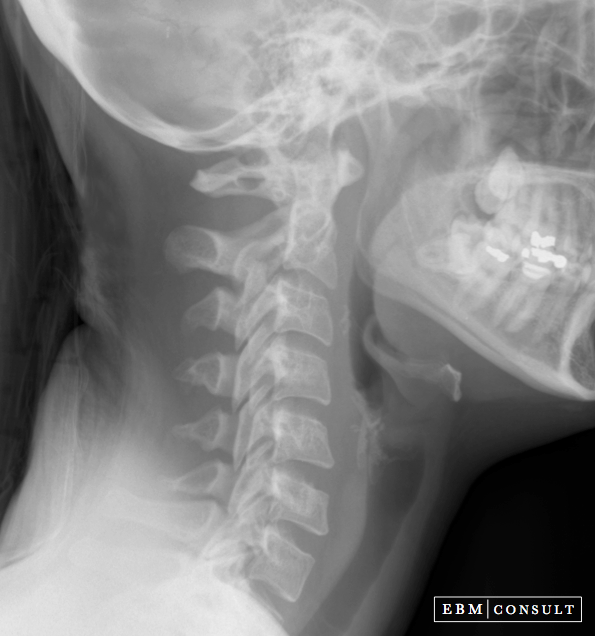
Note: Scroll over or tap on image to see labels & lines.
Core Radiographic Lines
Note: Scroll over or tap on the image to see labels & lines
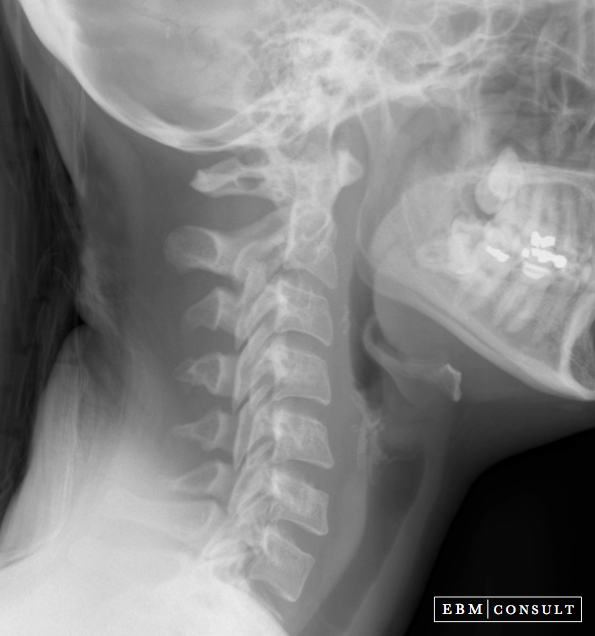
Note: Scroll over or tap on the image to see labels & lines
McRae Line:
Chamberlain Line:
Wackenheim Line:
How to Read Lateral C-Spine X-ray
When reading any radiograph the clinician should establish a process or order they follow each time. While in no particular order, consider evaluating the following:

